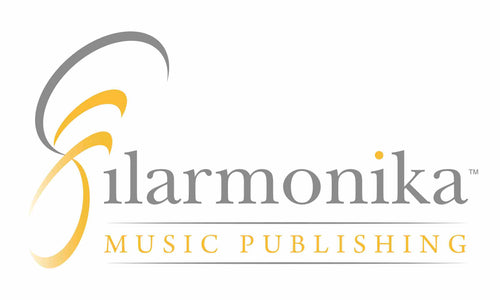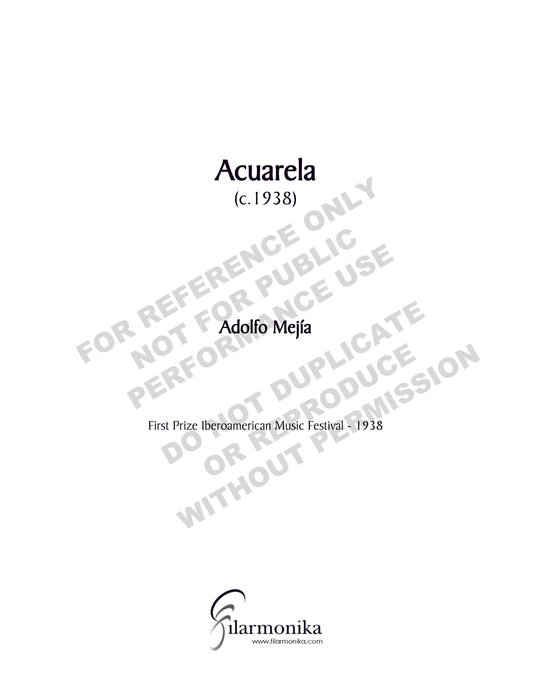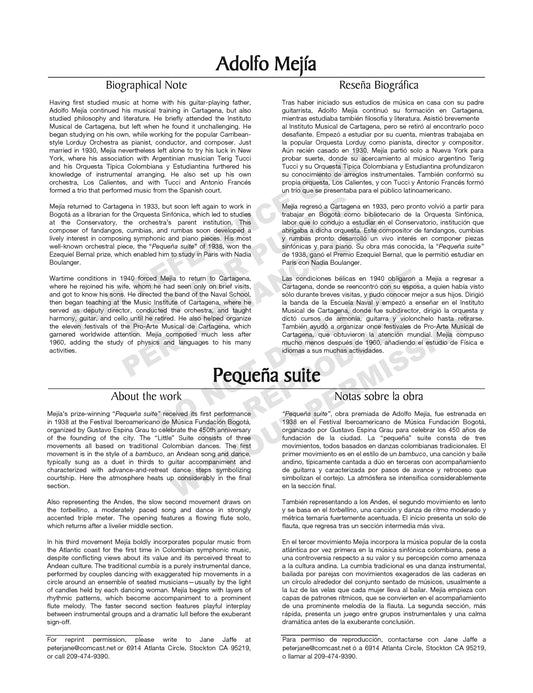 Having first studied music at home with his guitar-playing father, Adolfo Mejía (1905-1973) continued his musical training in Cartagena, but also studied philosophy and literature. He briefly attended the Instituto Musical de Cartagena, but left when he found it unchallenging. He began studying on his own, while working for the popular Carribean- style Lorduy Orchestra as pianist, conductor, and composer. Just married in 1930, Mejía nevertheless left alone to try his luck in New York, where his association with Argentinian musician Terig Tucci and his Orquesta Típica Colombiana y Estudiantina furthered his knowledge of instrumental arranging. He also set up his own orchestra, Los Calientes, and with Tucci and Antonio Francés formed a trio that performed music from the Spanish court.
Having first studied music at home with his guitar-playing father, Adolfo Mejía (1905-1973) continued his musical training in Cartagena, but also studied philosophy and literature. He briefly attended the Instituto Musical de Cartagena, but left when he found it unchallenging. He began studying on his own, while working for the popular Carribean- style Lorduy Orchestra as pianist, conductor, and composer. Just married in 1930, Mejía nevertheless left alone to try his luck in New York, where his association with Argentinian musician Terig Tucci and his Orquesta Típica Colombiana y Estudiantina furthered his knowledge of instrumental arranging. He also set up his own orchestra, Los Calientes, and with Tucci and Antonio Francés formed a trio that performed music from the Spanish court.
Mejía returned to Cartagena in 1933, but soon left again to work in Bogotá as a librarian for the Orquesta Sinfónica, which led to studies at the Conservatory, the orchestra’s parent institution. This composer of fandangos, cumbias, and rumbas soon developed a lively interest in composing symphonic and piano pieces. His most well-known orchestral piece, the “Pequeña suite” of 1938, won the Ezequiel Bernal prize, which enabled him to study in Paris with Nadia Boulanger.
Wartime conditions in 1940 forced Mejía to return to Cartagena, where he rejoined his wife, whom he had seen only on brief visits, and got to know his sons. He directed the band of the Naval School, then began teaching at the Music Institute of Cartagena, where he served as deputy director, conducted the orchestra, and taught harmony, guitar, and cello until he retired. He also helped organize the eleven festivals of the Pro-Arte Musical de Cartagena, which garnered worldwide attention. Mejía composed much less after 1960, adding the study of physics and languages to his many activities.

 Having first studied music at home with his guitar-playing father, Adolfo Mejía (1905-1973) continued his musical training in Cartagena, but also studied philosophy and literature. He briefly attended the Instituto Musical de Cartagena, but left when he found it unchallenging. He began studying on his own, while working for the popular Carribean- style Lorduy Orchestra as pianist, conductor, and composer. Just married in 1930, Mejía nevertheless left alone to try his luck in New York, where his association with Argentinian musician Terig Tucci and his Orquesta Típica Colombiana y Estudiantina furthered his knowledge of instrumental arranging. He also set up his own orchestra, Los Calientes, and with Tucci and Antonio Francés formed a trio that performed music from the Spanish court.
Having first studied music at home with his guitar-playing father, Adolfo Mejía (1905-1973) continued his musical training in Cartagena, but also studied philosophy and literature. He briefly attended the Instituto Musical de Cartagena, but left when he found it unchallenging. He began studying on his own, while working for the popular Carribean- style Lorduy Orchestra as pianist, conductor, and composer. Just married in 1930, Mejía nevertheless left alone to try his luck in New York, where his association with Argentinian musician Terig Tucci and his Orquesta Típica Colombiana y Estudiantina furthered his knowledge of instrumental arranging. He also set up his own orchestra, Los Calientes, and with Tucci and Antonio Francés formed a trio that performed music from the Spanish court.


